"What was once thought to be a featureless abyss is in fact a dynamic, variable and biologically rich environment." Katrin Linse, a marine biologist with the British Antarctic Survey, said this about Antarctic sea life.
Crary Lab, where the scientists are based at McMurdo, is named for Alfred P. Crary (1911-1987), a pioneer in polar geophysics and glaciology. He was also the first person to set foot on both poles!
Our lab is located next to the aquaria and fish tanks in Phase III (the lowest wing) of Crary. It is great to check up on the critters when we go in and out of the lab.
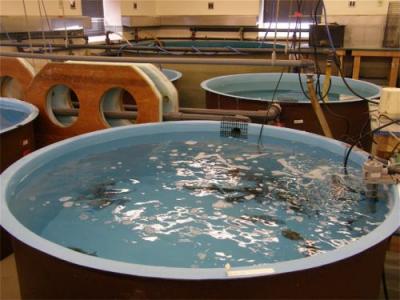
Fish Tank in the Crary Lab
There is also a "touch tank" where you can get up close and personal with some of the critters from McMurdo sound.
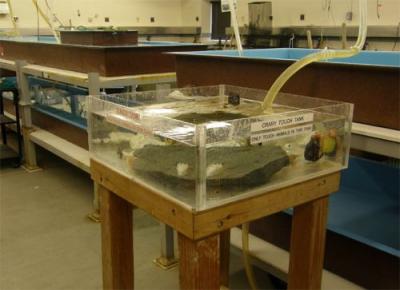
The touch tank at Crary Lab
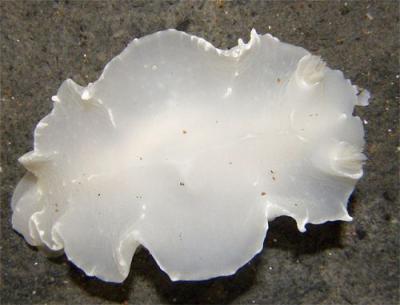
Nudibranch in the touch tank
Nudibranchs are basically "naked" snails without shells. This nudibranch is about four inches long and the head is on your right. The two tufts sticking up are its gills so it can extract oxygen from the sea water for respiration. My students can explain why there is a lot of SURFACE AREA on those gills! There is only so much oxygen dissolved in the ocean water and organisms need surface area to access the oxygen and absorb it into their blood or tissues.
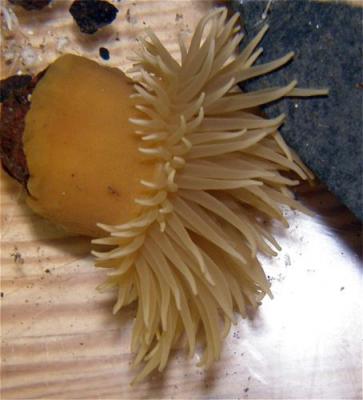
Sea Anemone
This sea anemone may look benign, but...
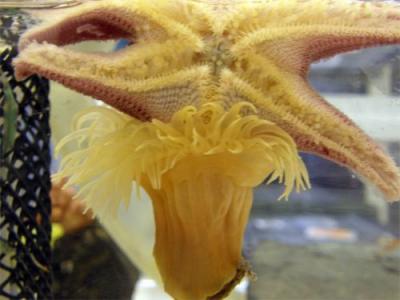
Here is the same anemone preying on a starfish!
Anemone's may look like plants, but their "petals" are really tentacles with stinging cells in them! This anemone is ingesting the arm of a starfish; definitely not "fast food"!
Tune in tomorrow for more exciting predation in the Crary Lab!

